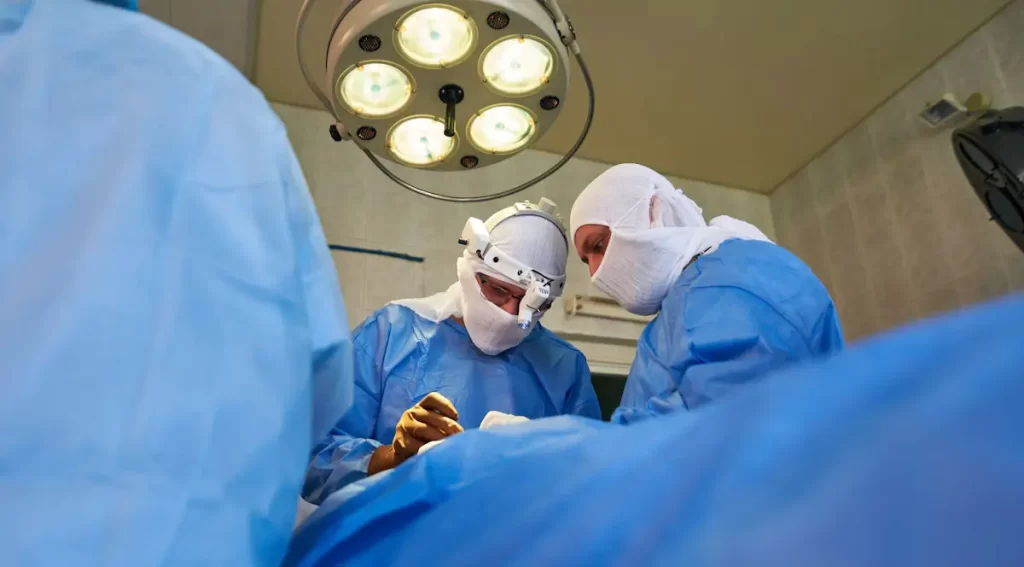Bottom surgery is a key medical step for some transgender people. It changes physical traits to match a person’s chosen gender. This can help improve their mental health, self-confidence, and life quality. Surgeons use different methods, like turning a penis inside out or using gut tissue, to make the genitals look natural. Like all major surgeries, it carries risks. It requires careful thinking, preparation, and aftercare. For more information on the process, benefits, and potential risks, it’s good to do more research.
Understanding Gender Affirmation Surgery
To truly understand gender affirmation surgery, we must realize it’s a surgery that changes a person’s physical sex to match their gender identity. This is very important for transgender people, who often feel a strong disconnect between their physical sex and their actual gender. Gender affirmation surgery, usually called bottom surgery, can help solve this problem.
The surgery uses different methods, such as turning the penis into a vagina, using part of the lower intestine for the same purpose, or other non-invasive procedures. Surgeries to create a clitoris and labia, the outer parts of a female’s genitalia, are commonly done during bottom surgery. This makes the new genitalia look and feel more natural.
Before this surgery, the individual often needs to remove body hair for the best results. The surgery is done in one step, changing male genitalia to female genitalia all at once. So, gender affirmation surgery doesn’t just change a person’s body, it also confirms their identity and sense of belonging.
Procedure Details and Preparation
Understanding the importance of gender affirmation surgery, let’s look at the steps and preparations needed for transfeminine bottom surgery. This surgery often includes a method called penile inversion vaginoplasty. This complex surgery uses penile tissue to create a new vagina.
Before surgery, it’s often essential to remove hair to make the surgery go smoothly and improve the results. This step is crucial to the look and function of the surgery.
During the surgery, the doctor will perform a clitoroplasty to create a new clitoris, which is essential for feeling and sexual function. They’ll also perform a labiaplasty, making the inner and outer labia for a natural look.
These surgeries aim to match physical appearance with gender identity, which is essential for affirming who you indeed are. By doing this, the surgery can improve mental health and quality of life. It gives individuals a body that reflects their true identity.
Risks and Benefits Analysis
When we talk about the pros and cons of gender-affirming bottom surgery, we need to know that while it can change a person’s life, it also has some risks. These include bleeding, infection, and problems linked to anesthesia. On the other hand, the benefits can significantly boost a person’s mental well-being, happiness, and comfort with their gender identity.
Here are some essential things to remember:
- Surgery requires a thorough check of a person’s health, the surgical methods used, and care after surgery for the best results.
- There are many methods used in this surgery like penile inversion vaginoplasty or non-penile skin inversion, based on what the patient needs.
- Most people are happy after the surgery, saying it has improved their self-esteem and quality of life.

Recovery and Long-Term Outlook
The road to recovery after gender-affirming bottom surgery needs careful attention and regular doctor check-ups. The time it takes to heal, usually 6-8 weeks, can change from person to person. It depends on things like how healthy you are and the exact surgery you had.
Seeing your doctor after surgery is very important. They can check how well you’re healing and deal with any problems. If there’s an infection, they can find it and treat it during these visits.
After surgery, taking care of your wound and following your doctor’s instructions is critical for the best results. This can help to stop problems and help you recover well in the long run.
In the long run, most people who have this surgery feel better about their lives and mental health. But it’s important to know that getting the surgery isn’t the journey’s end. It would be best to keep seeing your doctor and caring for yourself to keep feeling good.
When to Consult Your Doctor
Before you think about having gender-affirming bottom surgery, talk to your doctor. This chat can let you know if you can have the surgery and its risks. It can also help you understand what to expect. You should see your doctor when you are ready to think seriously about this big change. During this talk, you can ask about how to prepare, what the surgery will be like, and the care you’ll need after to recover well.
To make the most of your talk with the doctor:
- Get ready: Collect all the details about your past and present health. This can help your doctor to check if you can have the surgery.
- Questions: List things you want to know about the surgery, its dangers, and what to expect afterwards. This will ensure you get all the answers you need.
- Be emotionally strong: This step needs a lot of emotional strength. You can get help from friends and family or join groups who can support you through this big change.
Conclusion
In simple terms, gender-affirming bottom surgery is a helpful guide for people wanting to match their physical body with their true gender identity. Knowing all about the surgery, its pros and cons, and what to expect after, helps them make smart decisions. This can be a big step in their gender affirmation journey. Having clear, honest talks with your doctors for the best understanding and results is crucial.
Share this article
